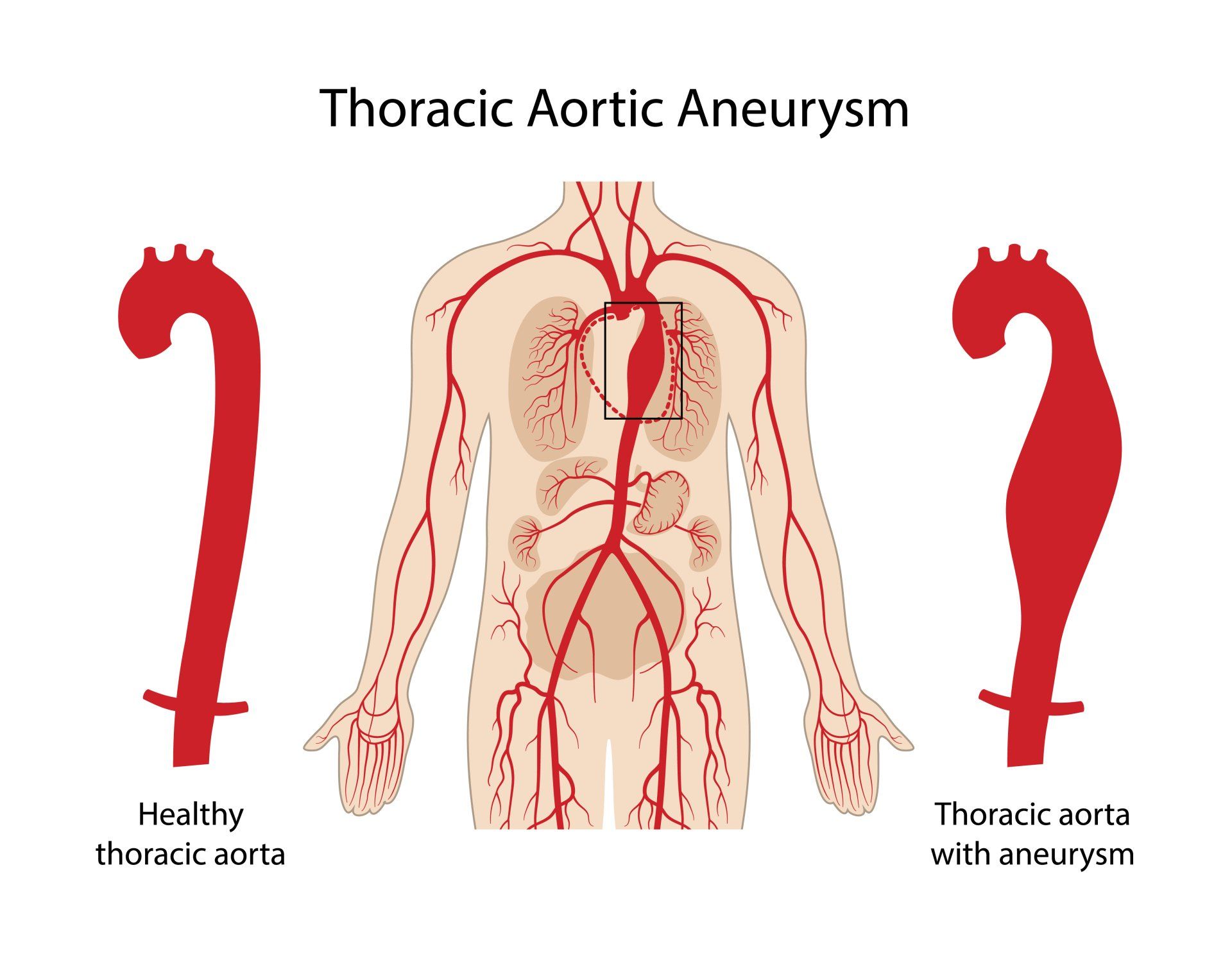Thoracic Aortic Aneurysm

An aneurysm occurs when the wall of an artery is weakened over your life and expands due to the blood pressure on the weakened artery wall. The larger the aneurysm becomes, the higher the risk of rupture (just like blowing up a balloon that eventually pops).
The thoracic aorta is the main artery from the heart that carries blood to the arms and brain and down to the abdomen. A thoracic aortic aneurysm is when the aorta in the chest expands.
Risk factors include cigarette smoking, high blood pressure, high cholesterol, a personal or family history of aneurysms, trauma (like a car accident), an abnormal aortic valve in the heart, or connective tissue disorders like Marfan syndrome.
Symptoms may include chest pain, upper back pain, shortness of breath, cough, or hoarseness. If the artery grows very quickly, a dissection may occur, and can cause severe and sudden chest pain, back pain. A dissection may cause a lack of blood flow to the arms/legs and even the vital organs. A patient may have no symptoms if the aorta grows slowly until the aorta ruptures or a dissection occurs, which is most often lethal.
If thoracic aneurysms are found early and they are small, they may be treated by modifying risk factors and can the size can be followed with a CT scan of the chest periodically.
Once thoracic aneurysms reach a certain size or symptoms develop they may need surgery. Surgery can be done with minimally invasive techniques (large stents covered with goretex to take the pressure off of the aneurysm). Some may require major surgery. These surgeries are usually performed by cardiothoracic surgeons or vascular surgeons in academic centers in Nashville or St. Louis.


